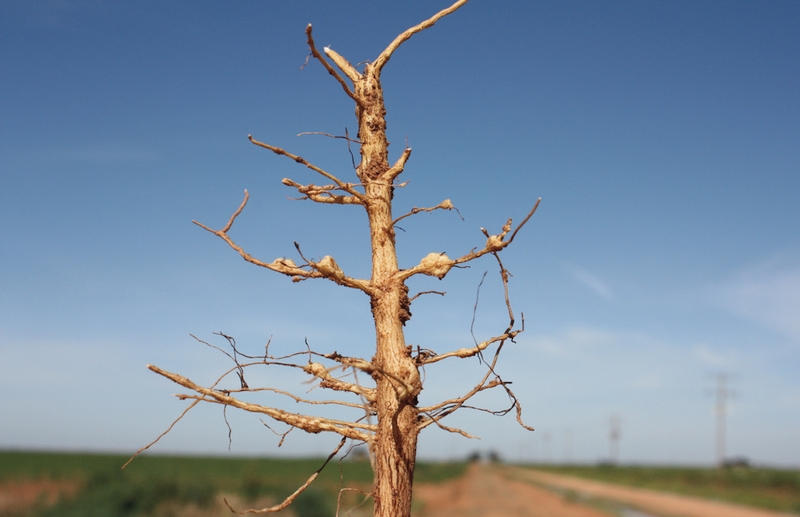Tackling the Silent Threat to Cotton Yields

If reducing cotton yields were a contest, nematodes would take the top prize.1
Nematodes have long been a threat to cotton production, particularly root-knot nematodes, which cause extensive damage to the root system by impairing nutrient uptake and water absorption. Last year, the U.S. saw a reduction in cotton by 302,326 bales due to root-knot nematodes, followed by reniform nematodes with 153,350 bales lost.2
As the impact of nematodes becomes increasingly apparent, growers across the Cotton Belt are actively searching for solutions to address this ongoing pest challenge. Kenny Melton, BASF Agronomic Manager, says seed selection will be paramount to minimize the risk of nematodes in their fields.

Each grower’s field is different, meaning the challenges they face each season differ too. Fortunately, there are seed options available to meet a grower’s unique needs, helping growers achieve the best harvest performance for their individual operation.
Choosing the right seed for success
Growers must consider many important factors when selecting their cottonseed, such as yield consistency, fiber quality and maturity, as well as variety performance across different soil types and geographies. With nematodes affecting crops year after year, choosing a variety with nematode resistance is the best line of defense against these parasitic pests.
“Every grower wants to ensure their plant has what it needs to see success at harvest, and that includes protection from both visible and invisible pests. Planting nematode-resistant varieties can help farmers suppress nematode infestations, helping them obtain healthier crops and improved yield outcomes,” said Melton. “As an added benefit, the right variety will also help provide early-season vigor, strong stand establishment and enhanced fiber quality.”

Root-knot nematode galling on cotton roots, stunting growth. Photo by Kenny Melton, Western Region Agronomic Manager for BASF.
BASF FiberMax® cotton seed varieties offer industry-leading protection against nematodes. FiberMax cotton’s native trait package provides a strong defense against root-knot and reniform nematodes, while also offering resistance to bacterial leaf blight and tolerance to Verticillium wilt and other key diseases challenging growers’ yields.
“Cotton growers plant crops in all kinds of challenging conditions, which is why they need a variety they can trust to perform under pressure,” said Melton. “With FiberMax cotton, growers experience a variety tailored to the unique needs of their fields, ensuring flexibility and season-long success against nematodes and other yield-robbing threats.”
For more information, contact your local BASF representative or visit FiberMax.com.

1Faske, T., & Sisson, A. (2024, February 16). Cotton disease loss estimates from the United States – 2023. Crop Protection Network. https:// cropprotectionnetwork.org/publications/cotton-disease-loss-estimates-from-the-united-states-2023#:~:text=The%20states%20reporting%20
data%20from%20the%20Southeastern%20cotton%2Dgrowing%20region,leaf%20spot%2C%20and%20boll%20rots.
2Cotton disease loss estimates from the United States – 2023. Crop Protection Network. (2024, February 16). https://cropprotectionnetwork.org/ publications/cotton-disease-loss-estimates-from-the-united-states-2023#:~:text=The%20states%20reporting%20data%20from,2023%20 %E2%80%94%20with%2062%2C401%20bales%20lost
Always read and follow label directions. FiberMax is a registered trademark of BASF. © 2024 BASF Corporation. All rights reserved.



